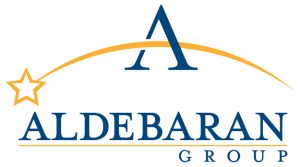 In the tech world, the term End of Life is generally accepted to mean the time when a hardware or software manufacturer no longer supports a product. Of all the decisions your firm needs to make regarding the timing of upgrades and replacement of hardware and software, the decision with what to do about End of Life (EOL) computer assets is simple. They must be replaced. We consider here, the coming EOL of the Windows 7 Desktop operating system to understand why.
In the tech world, the term End of Life is generally accepted to mean the time when a hardware or software manufacturer no longer supports a product. Of all the decisions your firm needs to make regarding the timing of upgrades and replacement of hardware and software, the decision with what to do about End of Life (EOL) computer assets is simple. They must be replaced. We consider here, the coming EOL of the Windows 7 Desktop operating system to understand why.
Windows 7 was released for general use in October, 2009. At the time it was widely considered to be a significant improvement over previous Windows versions and it proved to be so, over what is now almost a decade. Computer users and the technicians that support them, crave stability in their computer environments and Windows 7 has delivered that over its life. The stability however has allowed many organizations to delay the replacement of Windows 7, despite Microsoft’s high-powered push to move everyone to Windows 10. On January 14th, 2020, Microsoft will no longer provide support for Windows 7 and it will be considered at EOL. Why does support matter? It’s all in the risk.
When Microsoft ends support for Windows 7, it will no longer provide bug-fixes, but more importantly, make no new efforts to block security vulnerabilities. In practical terms this means that any vulnerability found after the EOL date will not be remedied and will be open to potential hacking for as long as the machine runs. The risks are significant. In May of 2017 a vulnerability in the past EOL operating system Windows XP was credited with wreaking havoc across the world, with the British National Health Service serving as an example. The NHS had to cancel almost 20,000 medical appointments, cancel surgeries and divert ambulances to unaffected hospitals. The data loss and costs to get systems back online were staggering. Your firm does not want to be in the headlines for a breach like this.
The security risks alone should be enough to prompt replacement, but Increasingly, newer software and hardware will be incompatible with the EOL operating system. Your tech team will begin spending more time on work-arounds and ad-hoc fixes to preserve the operating system, while your team’s productivity suffers. Software and hardware manufacturers have moved on, and so should your firm.
So, have your IT team report on your systems. If there are Windows 7 machines in use, build a plan now to have them replaced or upgraded to Windows 10 in the next twelve months. Remind them to find all Windows 7 machines on your network. The dusty old scanning or cost-recovery machines need to be upgraded or replaced too.
Don’t stop at Windows 7. The stakes have never been higher to keep all your firm’s equipment and software current. Leave nothing to chance when you review your systems. Ask your IT team to check all computer hardware and software to ensure it remains supported and is patched with current software. If your IT team doesn’t take the risks seriously, it may be time for EOL decisions there as well.

You must be logged in to post a comment.